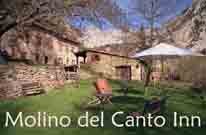Tuesday, December 22, 2009
Stop killing Cormorants
JOIN CAUSE
Saturday, December 12, 2009
Cormorants
The fishermen scream blue murder so that the wintering population of Great Cormorant (Phalacrocorax carbo) feeds trout (of excessive form according to them), and have obtained that some regions governments “regulate” (kill) these populations.
And now the government, kill a high number of Cormorants, without saying that really exhaust our rivers are the fishermen.
Whenever the man put to regulate and to control any natural species, the disaster is assured.
Sad.
Tuesday, December 08, 2009
Molino del Canto in facebook

Sunday, December 06, 2009
*Birds Today
Great Tit
Blue Tit
Song Thrush
Mallard
Short-toed Treecreeper
Raven
Long-tailed Tit
Dipper
Saturday, December 05, 2009
*Birds Today
Dunnock
Great Tit
Grey Heron
Blue Tit
Song Thrush
Mallard
Firecrest
Robin
Wren
Atlas of wintering birds. VN3040

One of the most ambitious projects of the SEO/BirdLife, is the atlas of wintering birds.
These days I have finalized one of the squares that I have assigned and I believe that the balance of the three years is good.
Although has been a big effort.
The route, within the valley of zamanzas and the highland of bricia.
Two very different zones in vegetation and birds.
In all route I have located 28 different species from birds, I emphasize Brambling and Dartford Warbler.
In this square, in three years I have located a total 58 different species.
This is the relation of observed birds, and the number of birds:
Blackbird 62
Blackcap 5
Blue Tit 20
Brambling 2
Carrion Crow 28
Cetti's Warbler 1
Cirl Bunting 62
Coal Tit 10
Common Bullfinch 38
Common Buzzard 7
Common Chaffinch 244
Common Kestrel 3
Common Raven 5
Common Starling 91
Common Stonechat 1
Common Wood Pigeon 60
Corn Bunting 3
Dartford Warbler 1
Dipper 2
Eurasian Jay 35
Eurasian Sparrowhawk 4
European Golden Plover 3
European Nuthatch 8
European Serin 1
Fieldfare 59
Firecrest 17
Goldcrest 17
Goldfinch 8
Great Cormorant 4
Great Grey Shrike 1
Great Spotted Woodpecker 10
Great Tit 56
Green Woodpecker 18
Greenfinch 5
Griffon Vulture 10
House Sparrow 31
Linnet 88
Long-tailed Tit 23
Magpie 7
Marsh Tit 1
Meadow Pipit 16
Mistle Trush 32
Northern Lapwing 60
Peregrine Falcon 1
Pied Wagtail 2
Red Kite 1
Red-billed Chough 74
Redwing 47
Robin 51
Rock Bunting 2
Rock Sparrow 1
Short-toed Treecreeper 18
Siskin 72
Sky Lark 50
Song Trush 13
Spotless Starling 9
Wren 32
Friday, June 26, 2009
Friday, June 12, 2009
Bird Census. SACRE VN 44
Unlike other years, the number of detected birds has been something greater, 62 species.
No new detected species.
Most remarkable:
Wryneck, the past year I did not detect any bird, and this year I have only heard two birds. Others years, with 10 – 15 birds.
Rock Sparrow, records similar to last years.
Two records of European Turtle Dove. This bird have a bad population with an annual evolution of -2,3% in Spain.

Records of Common Quail (shortly time will be necessary to think about remove the “Common” in the name) like other farming birds the Common Quail have a very bad situation.

 House Martin, a few birds. In this area is more common to find nest in the rock that in the houses, mainly so that people destroy the nests.
House Martin, a few birds. In this area is more common to find nest in the rock that in the houses, mainly so that people destroy the nests.A total of 62 different species, the list:
Mallard
Griffon Vulture
Hen Harrier
Black Kite
Green Woodpecker
Great Spotted Woodpecker
Sky Lark
Thursday, May 07, 2009
A new trip report in the Gorges of River Ebro
We begin in the same Inn, where the concert of the songbirds already is very significant and easily we listened to Song Thrush, Common Chiffchaff, Iberian Chiffchaff, Bonelli’s Warbler and Blackbird.
Ours to first stop in a zone of meadows where it emphasizes the spectacular flight of the Meadow Pipit. We can listen the songs of Thrushes, Robins and Wrens, while a Short-toed Eagle flies over to us.
A Peregrine Falcon flies in the zone of crags, between Griffon vultures and Egyptian Vultures. Crag Martin accompany the route throughout to us.
The fast flight of the Dipper over the river, between the mills.
Firecrest, Garden warbler, singing from within of the shrubs, whereas in the stop we can be seen Cirl bunting.
Near the towns the Swallows make their appearance.
In the poplars, the Woodpeckers emit their songs.
White stork, Black Kite, Common Buzzard, make their appearance in the valley of Valderredible.
We when up to the highland, they appear the typical species of this habitat, Hen Harrier, Whinchat, Northern Wheatear, Sky Lark, Yellowhammer..
Altogether, a good morning of birdwatching with a total of 56 species observed or heard singing.

White Stork
Black Kite
Egyptian Vulture
Griffon Vulture
Short-toed Eagle
Hen Harrier
Eurasian Sparrowhawk
Common Kestrel
Peregrine Falcon
Rock Dove
Common Cuckoo
Green Woodpecker
Great Spotted Woodpecker
Sky Lark
Crag Martin
Barn Swallow
House Martin
Meadow Pipit
White Wagtail
Dipper
Wren
Robin
Whinchat

Stonechat
Northern Wheatear
Blackbird
Song Thrush
Cetti’s Warbler
Garden Warbler
Blackcap
Bonelli´s Warbler
Iberian Chiffchaff
Firecrest
Blue Tit
Great Tit
Short-toed Treecreeper
Jay
Magpie
Red-billed Chough
Jackdaw
Carrion Crow
Common Raven
Spotless Starling
House Sparrow
Rock Sparrow
Common Chaffinch
European Serin
Green Finch
Goldfinch

Linnet
Yellowhammer
Cirl Bunting
Rock Bunting
Corn Bunting

Thanks to Ginny, Pete, Christine, Jenny, Paul and Mrs. Hughes for their interest inthe birds of Burgos
Thursday, April 16, 2009
Migratory Birds
Sunday, April 05, 2009
The Rarest Bird of Spain

The Rook Corvus frugilegus in Burgos
Why the León rooks are not realised movements from the breeding sites?.
The Rook, nests in cold countries, no case of the Mediterranean, and near the fluvial shores.
Its presence in from Leon can be justified because it is cold and there are rivers, but why in Leon and no breeding in , for example, Palencia or in Burgos? , when there are similar meteorological conditions and similar habitats.



Thursday, April 02, 2009
A trip report

Four Roe Deer leave running, while a Common Buzzard is thrown in search of its prey from a tree.
A Grey Heron on an unusual perching, at the top of a black poplar.
Stop to observe the rocky wall, locating to a precious female of Peregrine Falcon, a while a Short-toed Eagle flies over the zone to settle in a rocky one. Several Griffon Vultures settle and fly by the zone.

A flock of 36 Great Cormorants flying in formation towards the north.
In the bank of the river, among the alders and ashes, the Iberian Chiffchaff with its characteristic voice.
The Egyptian vultures, just arrived from Africa, with their spectacular plumage, emphasize among the Griffon Vultures. To far a Golden Eagle it flies near the cut ones, one settles in a dry tree and it allows us to observe it easily.

In the canyon of Orbaneja del Castillo they appear the Egyptian vultures again, several Black Kite and the omnipresent Griffon Vultures.
Wood Pigeon, Jackdaw, Yellowhammer.
Once again a Grey Heron surprises when being perching at the top of the rocky of the canyon of river Ebro.
Altogether 26 species of birds in a pretty morning of spring.

















